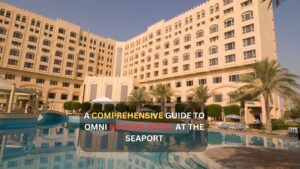We can learn more about the process of washing airplanes by studying the methods that are used in washing these magnificent machines. Cleaning an airplane is an essential step. Cleaning helps maintain the safety of your aircraft as well as improve its appearance. For many sports plane owners washing their planes is a part of the enjoyment of owning an aircraft. This doesn’t mean that we don’t appreciate a quick washing procedure, however.
How Are Airplanes Washed?
Washing your aircraft today is done by two methods. ( touchless car wash ) The first is through pressure washing, the other using a waterless washing technique. A pilot was asked by a customer how aircrafts were cleaned and he kindly replied in one word: cautiously.
Pressure washers are present in modern airports and typically employ a low-pressure, high-volume washing machine. A small percentage of the detergent used is utilized when pressure washing or rinse. Eighty percent of water used during the rinsing process is recycled and retained.
How To Power Wash An Airplane
Power washing takes place at a distance of three to four feet. It is recommended to be able to cover an area of three to four feet wide. Two areas require special attention that is the area around engines and exhaust. A little extra detergent and brushing might be required to clean these areas.
The water that is recycled, referred to as wastewater is continuously checked for salinity as well as other contaminants to ensure efficient cleaning. Once the wastewater has reached a specific level, it is transferred towards the water sanitary drain or storage tank for disposal , and fresh water is introduced to replenish the system.
The wastewater has to be cleaned up following the washing. This is done making use of high-powered vacuuming equipment. Pressure washers must eliminate wastewater at a specific location outside the airport.
Pressure Washing Airplanes Requires Permits
Professionals who operate power washing machines must have an authorization for washing aircraft. Operators must also have the right safety information available regarding the equipment they use for washing aircrafts.
People who use power washers are obligated to keep the the equipment in good condition in all times. ( Quick quak car wash ) A clogged the nozzles could increase pressure, and ultimately destroy the equipment. If a nozzle becomes blocked the operator can clean it out to make it clean or change it for a fresh one.
Why is it so important to clean airplanes? The answer is simple. It’s all about security. The jet plane accumulates lots of grime and dirt in flight. This results in resistance to the engine of the plane. It also reduces the efficiency of fuel and poses an enigma to pilots and passengers.
Important Warnings When Pressure Washing
The experts in the field of pressure washers give three tips on how to avoid pressure washing:
- It is recommended not to force clean an aircraft in the sun when the surface is heated because the solution used to clean it too long can cause damage to the paint.
- It is recommended to be cautious with a ladder for pressure clean high points as the force of the pressure could throw the person off their balance.
- It is recommended not to paint the glass of an aircraft particularly the windshield. The windows are constructed from a soft material that can scratch easily.
What is The Dirtiest Part of an Airplane?
When washing aircraft is required, the best results can be achieved by cleaning smaller sections at each time. The process usually begins at the tail end, the plane’s most filthy area. Then the fuselage and plane’s body are cleaned. Wheels must be cleaned and scrubbed with a toothbrush.
Airplanes require inspection for safety on a regular basis and it’s during a washing that the inspection takes place. Inspections are conducted to find damages to the frame as well as wear on seals and plastic parts as well as loose fittings, fastenings and other issues with looms.
Washing Without Water
The waterless washing systems can be used designed for pilots of airplanes or owners who can’t utilize water because of rules at the airport or simply prefer to not utilize water. Water can cause a great deal of harm if it gets into areas and builds up for long periods of time.
A variety of popular products are available with the waterless wash technique. Most are wax-based products. They allow the plane to be cleaned and left to remain wet. The spray is then applied. The drying process is completed with the help of either a towel or chamois giving an “just-waxed” appearance.
Many of the sprays have their own formulations. they are created to trigger an enzymatic reaction that penetrates the surfaces, forming a strong wax protection. A anti-corrosion ingredient in the sprays guards paint against corrosion, acid rain and bird debris.
Complete Waterless Aircraft Washing
The Wash Wax Mop
One of the best products offered are those that consist from mops and two fiber pads, and handles that extend or poles. This way, airplanes can be cleaned, and no ladder is required to access certain difficult-to-access, high-up areas.
In the majority of cases, poles used in this method have a standard reach of 3 feet to six feet. The longer-reach models can extend cleaning as far up to 12 feet.
The twin wrap-around pads were designed to clean and wash aircrafts and helicopters, without leaving scratches. They are mounted on the opposite side of the mop’s head, each pad has its own purpose one designed for”the “wet step” and one for the “dry step.”
The convenience of waterless washing appeals to the owner of a small plane. The plane is his greatest treasure and it’s not surprising that it is a joy to wash and waxing the plane himself. Washing products that are water-free enhance his enjoyment and will do so for decades to come, as new products are introduced to the market.
Also, you can find out more also about the car washing






